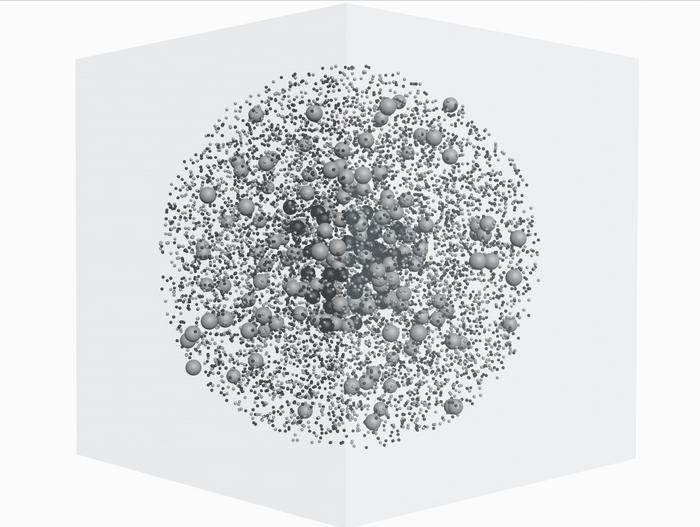26.09.2023

A schematic diagram of the marvellous absorber, composed of Compton-thin/Compton-thick clouds (larger grey/black spheres), and high/low ionized warm absorbers (smaller grey/black spheres).
A research team led by Prof. WANG Junxian from the University of Science and Technology of China (USTC) of the Chinese Academy of Sciences (CAS) revealed a clumped, multi-component eclipsing absorber in a study of X-ray occultation events in the active galaxy NGC 6814. The results were published in Monthly Notices of the Royal Astronomical Society on Aug. 23.
Active galactic nuclei have strong X-ray emission originating in a compact region near the supermassive black hole, the so-called corona region. When an absorbing cloud passes across the observer's line of sight, the corona is obscured by the cloud, significantly affecting the observed X-ray flux and spectral pattern, which is known as an X-ray occultation event. X-ray occultation events carry a wealth of time-varying information, which is useful for investigating the nature of the limiting coronal regions and of the occulting cloud. However, such occultations are infrequent and unpredictable. even if we are lucky enough to capture such rare occultations, their analytical interpretation still faces a great challenge: active galactic nuclei have significant intrinsic spectral variations. Hence, it is difficult to rigorously distinguish absorption variations from intrinsic spectral variations based on spectroscopic analyses alone.
To solve the problem, the team introduced the ‘softer-when-brighter’ variation pattern of active galactic nuclei into the analysis of occultation events, attaining additional independent constraints on spectroscopic analyses with the aid of the hardness ratio (HR)–count rate (CR) plot. The team applied this technique to a high-quality occultation event captured by the XMM-Newton telescope in NGC 6814 and successfully revealed a partially covering ‘Compton-thick’ absorption component in the eclipsing cloud.
The team also found that the occultation absorber in NGC 6814 was clumpy and consisted of many small clouds. In addition, the two thinner absorption layers detected by the high-resolution spectra of the XMM RGS equipment may be debris stripped from the main occultation cloud, similar to the stardust around comets.
Therefore, the team was able to successfully depict an exhaustive picture of the entire marvelous eclipsing system: a clumpy, multiphase cluster of clouds. At the same time, the size of the corona is very small, about 10 times the gravitational radius.
This work improves our understanding of the gas surrounding supermassive black holes, highlights the importance of the HR-CR plot in analyzing occultation events, and provides a new way of searching for and interpreting more occultation events.
Quelle: AAAS
